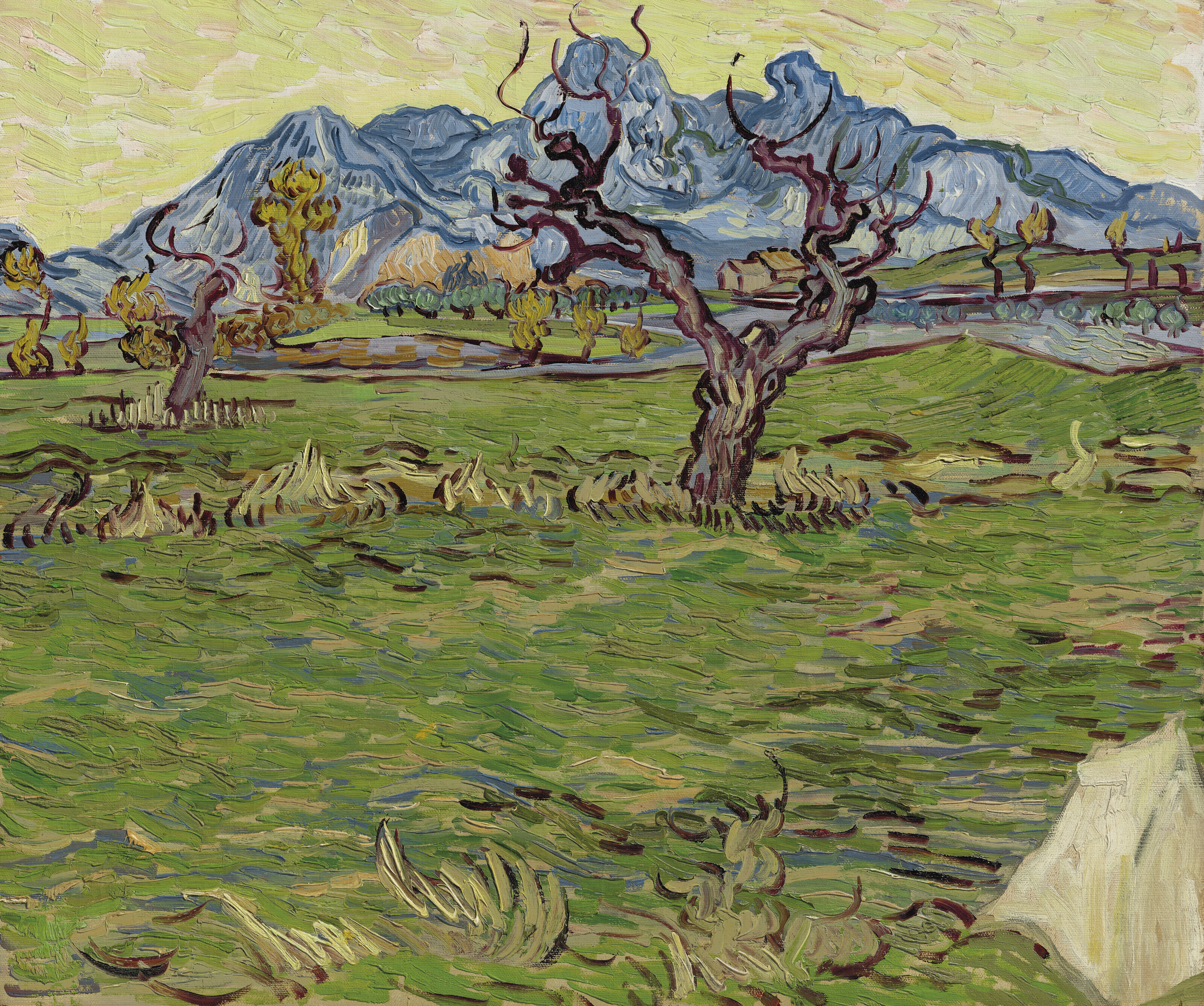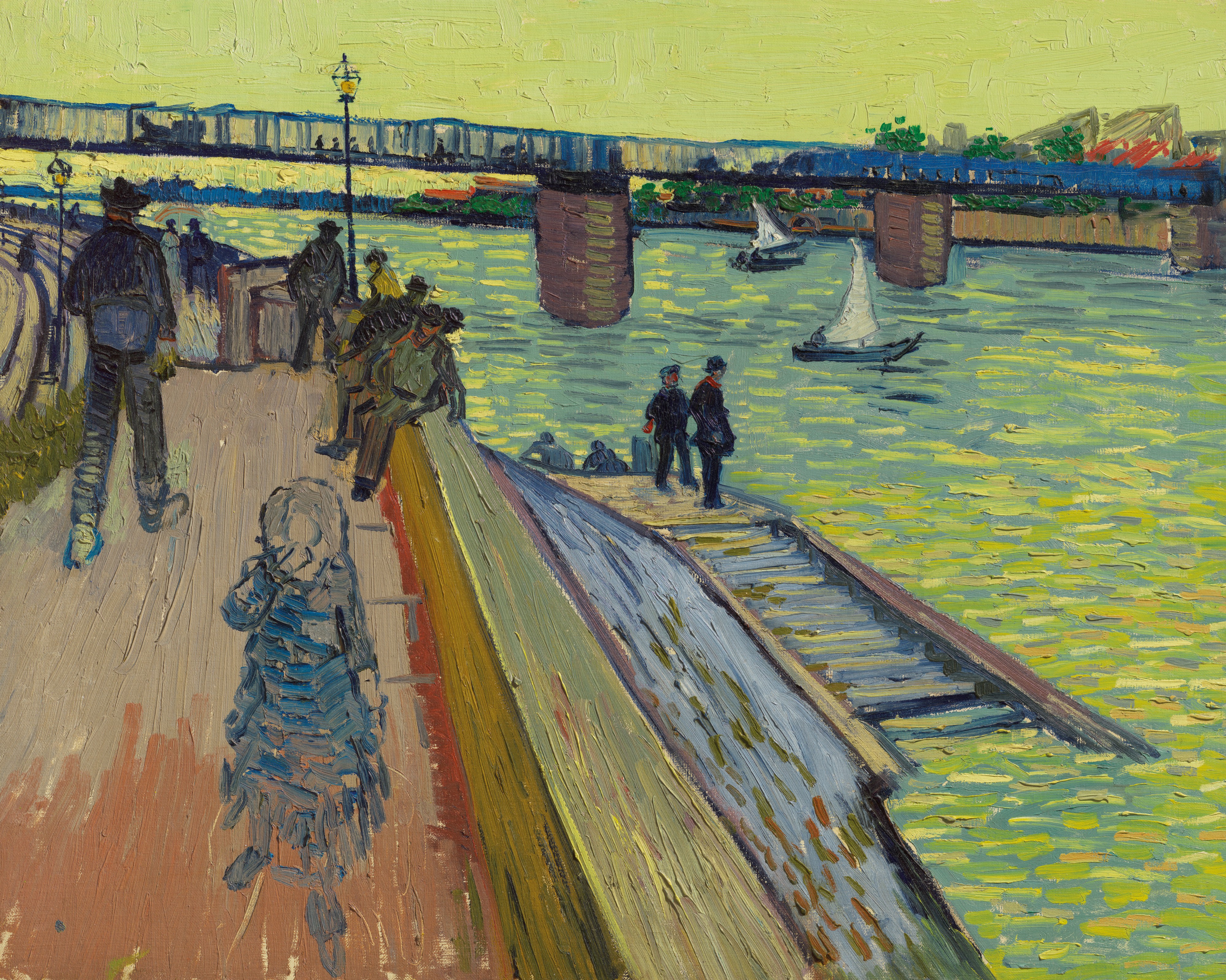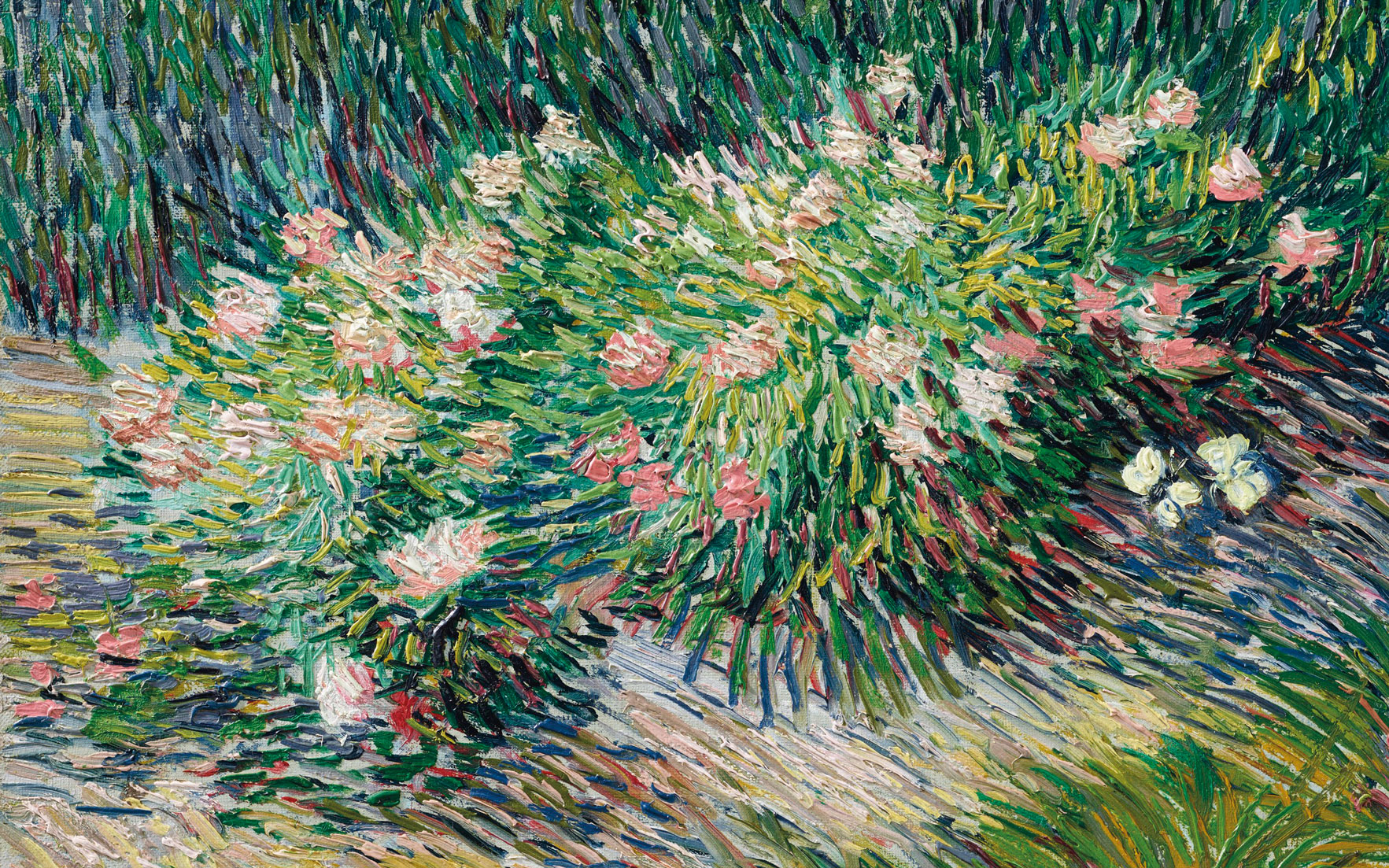Also see

Champs près des Alpilles
oil on canvas
17.3/4 x 21.5/8 in. (45 x 55 cm.)
Painted in November 1889
Estimate on request
Christie’s has announced Vincent van Gogh’s Champs près des Alpilles, 1889 (estimate on request; region of $45,000,000) as a leading highlight of the 20th Century Art Evening Sale taking place this May at Rockefeller Center in New York City. This rare work was one of two canvases sent from the artist while living in an asylum in Saint-Rémy to his close friend Joseph Roulin in Marseille at the beginning of 1890. A closely related view, painted from the same field, is now held in the Kröller-Müller Museum, Otterlo.
Vanessa Fusco, Co-Head of Christie’s New York 20th Century Evening Sale, remarked: “With its gestural, expressive handling and bold, vibrant color, Champs près des Alpilles exemplifies the key characteristics of Van Gogh’s trademark style – a style which is beloved and admired all over the world. Painted during the artist’s storied sojourn in an asylum in Saint-Rémy, and subsequently belonging to his friend Joseph Roulin, whose own image captured by Vincent now hang in museums across the world, Champs près des Alpilles is inextricably linked to Vincent’s own tragic biography. It is a delight to bring this masterpiece by the artist to auction for the first time.”
Van Gogh and Roulin initially developed a friendship in Arles. Today, Roulin is known to be one of the most important models of the artist’s career. Over the course of a few months in 1888, Van Gogh painted some of his best known portraits of the postman and his family. Not solely a model, Roulin was also a close friend and key support to Van Gogh during the time he spent in the hospital in Arles following his first major breakdown. Roulin continued to ardently support the artist from afar when Van Gogh was living in Saint-Rémy through regular correspondence. The letters between Roulin and Van Gogh reveal a strong bond between the two men; Roulin understood the master deeply as both as a person and as an artist. Champs près des Alpillesstands as a true testament to the friendship between them, embodying the importance of Roulin to Van Gogh’s artistic practice, as well as his life.
Depicting an expansive vista spanning a vivid green wheatfield with a majestic tree framed by the monumental peaks of the Alpilles in the background, all pictured beneath a citron-color sky, this landscape comprises the signature subjects Van Gogh is known for during this all important year. It was during his stay in Saint-Rémy that Van Gogh’s mature style truly emerged. He transformed the world around him into dazzling visions of often heightened color conveyed with evermore animated brushstrokes, both of which serve to imbue these canvases with a powerful—and highly influential—expressive charge. At this time, painting and nature itself took on a central importance to the artist.
Also unveiled in Hong Kong was Vincent van Gogh’s Eglogue en Provence - un couple d'amoureux (est. £7-10 million). Painted in March 1888, the month after Van Gogh arrived in Arles, the vibrant work is an intimate depiction of two lovers walking along the bank of a river. Its palette shows the influence of the new quality of light he encountered in the South of France, as well as the artist’s fascination with Japanese prints. The term eglogue in the title denotes a rural idyll, deriving from a Classical form used by the ancient Roman poet Virgil, with the figures acting as an enduring image of love. Vincent van Gogh’s Cabanes de bois parmi les oliviers et cyprès combines the artist’s favorite Provençal motifs and encapsulates the characteristics of the artist’s mature style that emerged at Saint-Rémy, where it was executed in October 1889, estimate on request (in the region of $40 million). van Gogh’s yearlong stay in Saint-Rémy would see his work reach a climax of expression, as he depicted the world around him with an ever-greater intensity. Sheltered in the asylum, he encountered spells of mental illness interspersed with periods of prolific production. “I’m ploughing on like a man possessed,” van Gogh wrote to his brother Theo from Saint-Rémy in September 1889, “more than ever I have a pent up fury for work, and I think that this will contribute to curing me.” With the motif of the olive tree, van Gogh was able to explore his now famed expressionistic artistic language—as the present work masterfully shows. These circular strokes and snaking, impastoed lines came to dominate van Gogh’s work in Saint-Rémy.
Christie’s will present Vincent van Gogh’s spectacular landscape Le pont de Trinquetaille as a highlight of the 20th Century Evening Sale at Christie’s New York on 13 May ($25,000,000-35,000,000). Painted during Van Gogh’s pivotal fifteen-month stay in Arles, situated on the Rhône River in the Provence region of Southern France, Le pont de Trinquetaille with its electric color palette and expressive brushwork is emblematic of the artist’s mature period. Inspired by the intense Provençal light while living amidst the rural French landscape, Van Gogh’s work underwent a radical transformation as he produced one modern masterpiece after another. Painted in the summer of 1888, Le pont de Trinquetaille dates from this extraordinary period of creativity. Depicting the Rhône from Arles, it encapsulates the experimentation of this seminal period. As with the greatest of Van Gogh’s Arles landscapes, color takes on a force of its own within this radically constructed composition. This period marks not only a central turning point in the artist’s life, but in modern art as a whole. Van Gogh’s groundbreaking use of autonomous color in his subjective vision of nature and the landscape would come to alter the course of painting throughout the following century, influencing artists from Ernst Ludwig Kirchner and Pablo Picasso to Willem de Kooning and Francis Bacon. Christie’s Senior International Director, Impressionist and Modern Art Jay Vincze said, “It is a huge honor to present this spectacular work by Vincent Van Gogh to the market. Works of this scale and importance are incredibly rare and everything about it, from the vibrant, ‘absinthe’ colour of the sky and the highly structured composition to the thick and expressive brushwork of the water speaks of an artist at the very height of his creative powers.” The vivid yellow-green shade of the river and sky lend the painting an eerie, unearthly beauty, casting the figures that populate the scene into dark, silhouetted shadow. As well as these bold planes of flattened color, the plunging perspective and clear distinction between the foreground and background in this scene were likely inspired by the Japanese prints that Van Gogh greatly admired at this time. With an esteemed provenance, Le pont de Trinquetaille was included in a host of important and influential exhibitions soon after its creation. It was exhibited in cities across Germany, featured in many of the shows visited by the nascent generation of German Expressionists, on whom Van Gogh’s work had a decisive impact. ‘Between the winter of 1886 and the summer of 1887 Van Gogh effectively crossed the divide into contemporary art.’ – Richard Kendall, art historian and curator at large at the Clark Art Institute |




